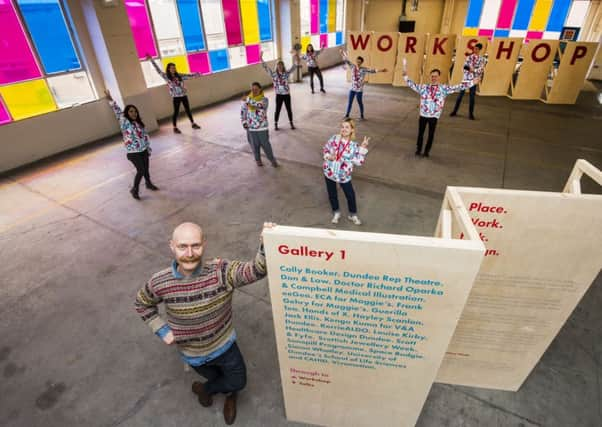Brian Ferguson: West Ward Works can be jewel in Dundee's crown


It would have been impressive enough had it simply been brought back to life for a revival of Witch’s Blood, a seminal promenade theatre production staged around the city in 1987 and expected to return in an even bigger guise for its 30th anniversary next year. But its rebirth was one of dozens of events held inside the sprawling “West Ward Works” during the inaugural Dundee Design Festival.
Staged in the UK’s first Unesco “city of design” to coincide with major events like the annual degree show at Duncan of Jordanstone College of Art and Design, it brought together fashion, computer gaming, healthcare, architecture, jewellery-making and science under one roof.
Advertisement
Hide AdAdvertisement
Hide AdThere was much to reflect on over Dundee’s industrial heritage and the development of the city as a hub for culture and creative industries, as well as tantalising glimpses into the future.
An intriguing snapshot was offered by the “Pecha Kucha” night, which offered 20 speakers just a few minutes each to highlight their work, before a sell-out audience of 400. Highlights included computer games designer and artist Malath Abbas, whose latest work explores the nature of drone warfare, fashion designer Kerrie Alexander, who created a “zero waste jacket” for the festival, ballet dancer, stuntman and Cirque du Soleil performer Darren Tait, and Fraser MacDonald, who appears to be on a mission to bring football and art together.
Keeping everyone fed and watered was a pop-up cafe created by Masterchef winner Jamie Scott, whose new restaurant over the Tay at Newport has been winning rave reviews.
There were several other pop-ups to be found in the city, including a recently-restored 19th century flour mill showcasing the work of 35 local artists and makers.
The weekend ended with the first ever event to be staged at the city’s new £1 billion waterfront area – the recreation from 1,200 cardboard boxes of Dundee’s Royal Arch, which was built for a visit by Queen Victoria, but later demolished to make way for the Tay Road Bridge. Although a largely fun event, it was intended to make people think about the changing face of the city as the new waterfront – with the V&A museum and a new-look railway station at its heart – take shape.
There is undoubtedly a huge focus on the area, but the rebirth of the West Ward Works and the debate over what happens to it next should also give the city council and its partner agencies plenty of food for thought about how best to use the city’s existing assets.
There are understandable concerns about the prospect of the shiny new waterfront sucking the energy and vitality out of other areas of the city, but it would not take a great leap of imagination for anyone who visited West Ward Works in recent days to see it in a future role – as another sparkling jewel in the city’s crown, along with the V&A museum. And it is worth considering whether the evolution of these two buildings could help bind the city’s past and future together.